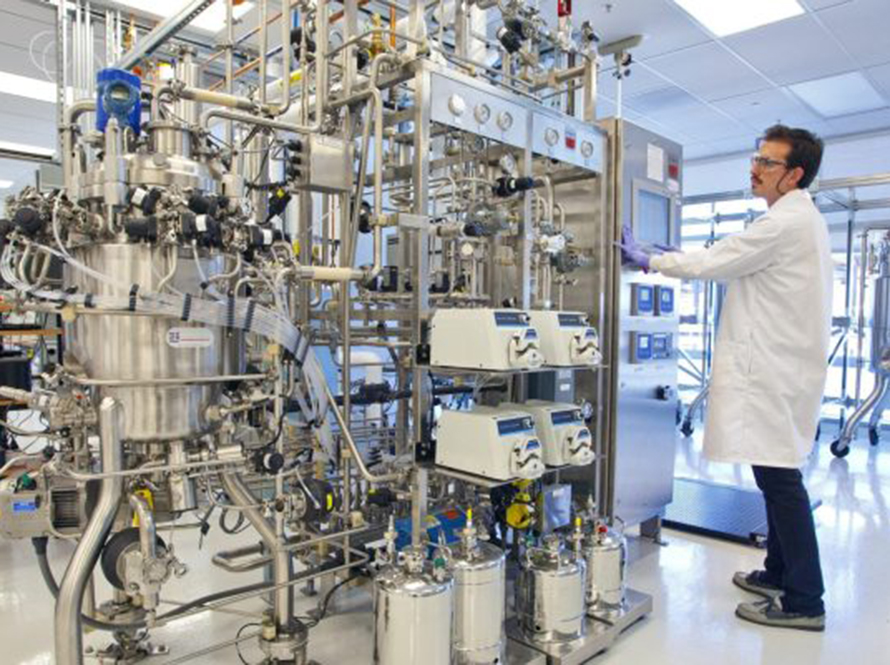Engineering S. cerevisiae to Produce Isoprenol for Sustainable Aviation Fuel and Chemicals 2020-086
This invention incorporates both the original mevalonate pathway and isopentenyl diphosphate-bypass pathway for isoprenol production. By constructing a knockout strain of a key endogenous gene, the strain achieved 380 mg/L titer.
Inventors: Taek Soon Lee, Jinho Kim
Predicting Metabolic Pathway Dynamics from Time Series Multiomics Data Using Machine Learning Techniques 2017-049
This invention can predict pathway dynamics to productively guide bioengineering efforts. This tool addresses the inability to accurately predict biological behavior after modifying the corresponding genotype.
Inventors: Zachary Costello, Hector Garcia Martin
Novel Fungal Autoinducible Expression System 2019-174
This invention uses the yeast mating signaling pathway to induce expression of a gene of interest. The gene’s state is via this cell density dependent genetic circuit, which reduces potential mutations and produces more stable genetic constructs.
Inventors: Jay D. Keasling, Jenny Landberg, Amin Zargar.
A System for Homogenous Editing of Mitochondrial Chromosomes 2017-153
This invention allows for any genetic change of the mtDNA without a selection marker or other sequence constraints. This tool has broad implications for those using fungal, plant, algal, and or human cells and tissues on an industrial scale.
Inventors: Jay Keasling, Aindrila Mukhopadhyay, Amand Reider Apel, Itay Budin.
DNA Synthesis Using Tethered dNTPs 2018-103
This invention uses a template-independent polymerase terminal deoxynucleotidyl transferase and could be used to form the basis of an enzymatic oligonucleotide synthesizer.
Inventors: Daniel Arlow, Sebastian Palluk.
Thermostable RNA-Guided Endonucleases (GEOCAS9) 2017-117
This invention is stable and enzymatically active in a wide temperature range and has an extended lifetime in human plasma compared to current CRISPR-Cas9 proteins which makes it a useful tool in genetic engineering applications.
Inventors: Nikos Kyrpides, Jennifer Doudna, Antonio Espino.
